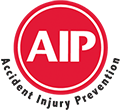Workplaces are at a greater risk of significant damage when workers aren’t familiar with the company’s fire prevention and response protocols. Fire safety training helps workers eliminate hazards, respond quickly if a fire occurs, and effectively prevent a major incident.
Every workplace is at risk of fire, highlighting the importance of fire safety training for the whole team. We detail what comprehensive training should include and some of our top tips in preventing a fire in the workplace.
The goal of fire safety training
A serious fire can result in significant job losses, injury, and death. By teaching everyone to work together, companies have a greater chance of reducing the risk and protecting their people and property.

The main goals of fire safety training are to:
- Be aware of the major causes of fires in the workplace
- Teach fire prevention
- Identify and report potential hazards
- Raise awareness of fire safety devices and how to use them
- Familiarize staff with the building’s emergency procedures
- Educate staff on what to do in the event of a fire
- Where to evacuate and how to leave the building calmly
Recognizing fire hazards
Fire safety training starts with how to recognize a fire hazard. The best way to prevent a fire is to keep sources of ignition and fuel apart.
The most common ignition sources are:
- Opens flames
- Electrical equipment
- Cigarettes or matches
- Welding or grinding equipment
- Heaters
- Lighting
The most common sources of fuel (anything that can burn) in the workplace are:
- Furniture such as desks, chairs, and couches
- Garbage
- Wood
- Cardboard
- Paper
- Plastic
- Flammable liquids and gases
Fire safety risk assessment
A fire safety risk assessment helps workplaces understand what they need to do to keep people safe and prevent a fire, including identifying who is at risk and the company’s emergency preparedness. The assessment examines the company’s:
- Emergency routes and exits
- Fire detection and warning systems
- Fire fighting equipment
- Removal or safe storage of dangerous substances
- Emergency fire evacuation plan
- The needs of vulnerable people
- Communication with employees and others on the premises
Prevention of fires
Everyone is responsible for preventing workplace fires, including all employees, employers, and management. When workers can identify fire hazards and take steps to prevent fires, they can contribute to a safer workplace.
Some tips to prevent workplace fires include:
- Keeping the workplace clean and uncluttered.
- Clean and lubricate machinery to prevent overheating.
- Promptly repair or replace faulty wiring and malfunctioning electrical equipment.
- Designate a smoking area and safely extinguish cigarettes.
- Mark hazards and potential fire risks with clear, visible signage.
- Never run electrical cords or wires under rugs and carpets or near a heat source.
- Ensure all electrical control panels are easily accessible with no obstructions around.
- Use and store chemicals safely.
- Never block firefighting equipment or emergency exits.
- Know where fire extinguishers are located and how to use an extinguisher properly.
Fire response
If a fire breaks out, workers need to know how to respond quickly and effectively to prevent the fire from spreading and causing significant damage. Training should include:
- The company’s emergency plan and the worker’s role in the plan
- How to activate the fire alarm
- Evacuation plan and steps
- The designated muster areas
- What to do if a worker comes across heat or smoke upon exiting
- How to fight a small fire with an extinguisher
Final thoughts
With fire safety training, workers can feel more confident, in control, and calm in the event of a real fire. Education is vital for keeping everyone in the workplace safe and can make a world of difference in preventing significant loss and damage.

